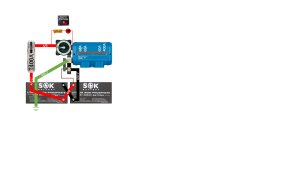corn18
Village Idiot
- Joined
- Sep 9, 2021
- Messages
- 676
My precharge circuit has a 25W 6 ohm resistor. Simple circuit shown below. I have 2x12V SOK 206Ah LFP in parallel feeding a Victron Multiplus II 12/3000/120x2 inverter/charger.
When I had the original non bluetooth BMSs in the SOK batteries, this setup worked great. Never had a problem with the BMSs going into protect as long as i precharged.
I have since installed the BT BMSs in the SOK batteries and now the precharge does not work. Trips both BMSs every time. I think the new SOK BT BMS is rated lower than the original non BT, so maybe that is the issue. While I could just swap the non BT BMSs back in, I was thinking about changing my precharge resistor.
No matter how long I hold the precharge button, the BT BMSs still go into protect. My thought is that I am not getting enough voltage to the Victron caps with the 6 ohm resistor and therefore, not getting a full precharge and that trips the SOK BMS. I am thinking that the caps are only getting 2V and that does not allow them to fully charge. If I go with a 4 ohm resistor, they will get 3V and a 2 ohm resistor will be 6V.
I ordered a 2 ohm and 4 ohm to try out, but wanted to check with the experts on here to see if it matters.

When I had the original non bluetooth BMSs in the SOK batteries, this setup worked great. Never had a problem with the BMSs going into protect as long as i precharged.
I have since installed the BT BMSs in the SOK batteries and now the precharge does not work. Trips both BMSs every time. I think the new SOK BT BMS is rated lower than the original non BT, so maybe that is the issue. While I could just swap the non BT BMSs back in, I was thinking about changing my precharge resistor.
No matter how long I hold the precharge button, the BT BMSs still go into protect. My thought is that I am not getting enough voltage to the Victron caps with the 6 ohm resistor and therefore, not getting a full precharge and that trips the SOK BMS. I am thinking that the caps are only getting 2V and that does not allow them to fully charge. If I go with a 4 ohm resistor, they will get 3V and a 2 ohm resistor will be 6V.
I ordered a 2 ohm and 4 ohm to try out, but wanted to check with the experts on here to see if it matters.




